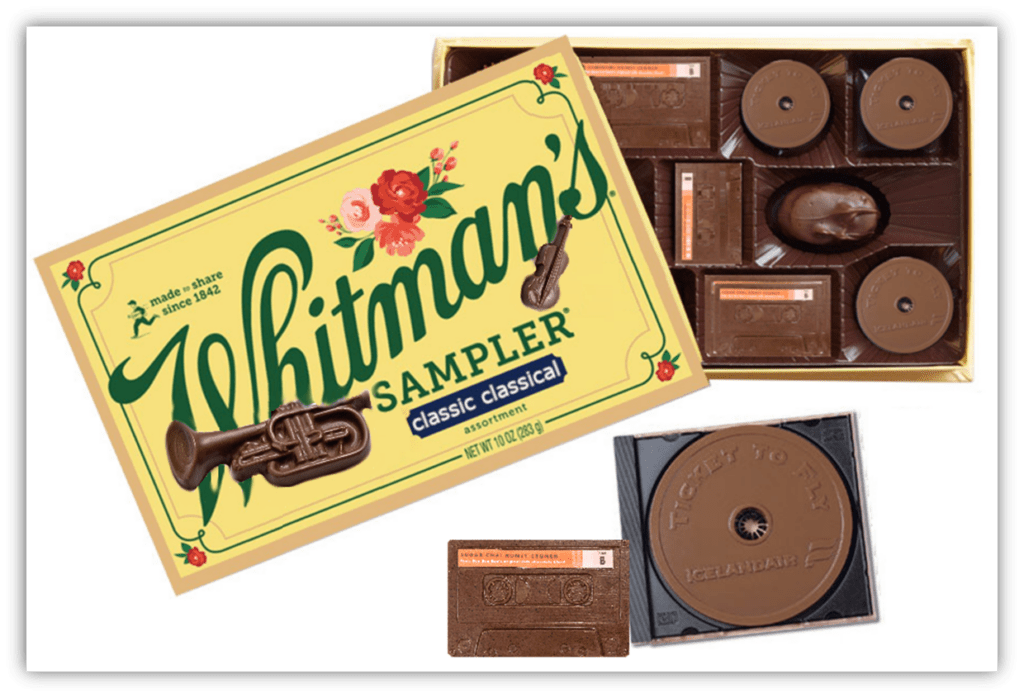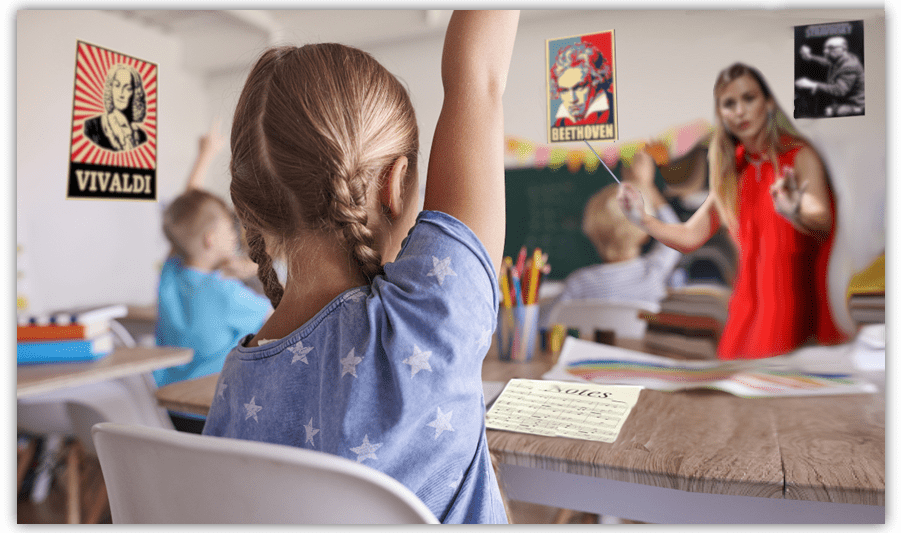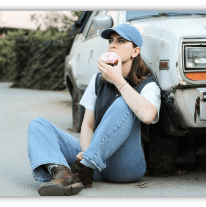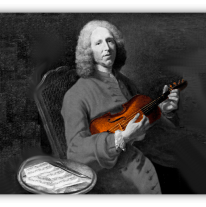I recently wrote about my experiences of getting into classical music…
… and now I thought it might be helpful to actually offer some tips for people who don’t know where to start, based on my own lessons learned as a classical latecomer.
Here are nine points to consider should you want to dip your toes into the wonderful world of musical composition. Test to follow!
1. Compilations are great gateways.
Ah, the Whitman’s sampler. How better to learn the beauty of dark chocolate caramel than to eat a piece of it immediately after the atrocity that is chocolate orange cream? The sampler provides customers with variety, and with variety comes contrast, all the better for learning about our preferences.

My mama always said that music compilations are like a box of chocolates. You get the idea. Whether it’s Classical For Lovers, or the soundtrack to Eyes Wide Shut, compilations can offer an easy access point to music that you may not have otherwise known about. Or if you did know about a certain musical piece, you hadn’t taken the time to enjoy the music on your own. With a compilation on hand, you can do so!
Of course, while chocolate boxes are arguably improved in sampler form, classical music usually doesn’t work that way. See below.
2. Listen to the works in their entirety.
Another type of sampler product out in the world is the movie trailer. These can indeed be entertaining in their own right, and they are a crucial part of the movie theater experience, right up there with sludge-buttered popcorn. But still, the whole point of trailers is to entice people to check out the full films, right?
Music samplers are perfect to find what may catch your ear, but in classical comps, those are usually just fragments of a larger whole. For the tracks you really love, make an effort to understand the fragment within the context of the complete work. You’ll be glad you did!
3. There’s nothing wrong with going for the famous stuff.
Even without a compilation, we all know at least some snippets of “The Greatest Classical Hits of All-Time, Ever,” do we not?
Ode to Joy, Fur Elise, Hallelujah from Messiah, Moonlight Sonata, the opening to Vivaldi’s Four Seasons, the Dance of the Sugarplum Fairy. Why not use those ultra-famous fragments as starting points for further exploration?
One reason why not? Pride. I think as general music fanatics, we sometimes hesitate at the prospect of going for obvious choices that would peg us as novices. I certainly felt some pangs of that as I was purchasing albums of Swan Lake, Sleeping Beauty, The Four Seasons, The Planets, Beethoven’s 9th symphony, and The Rite of Spring.
To hell with that pride stuff. There’s no shame in being a novice, and there’s no shame in getting to know a work of immense cultural impact. Bring on the learning!
4. That said, some of the great masterworks can be challenging.
While it makes sense to start with what you know, just keep in mind that symphonies tend to be pretty hardcore. As in, they can require real patience and dedication to truly appreciate. Also, ballets and operas tend to be long as hell, so a little caution there as well. Don’t feel bad if you don’t get into them right away.
On the other hand, concertos tend to be more readily digestible, as are string quartets and other chamber music. If piano is your thing, solo piano pieces tend to be quite inviting. Unless we’re getting into the modern era works, of course. See below.
5. Know the basics of what you want to dig into…or avoid.
You don’t need to know music history to get into classical music, but knowing the very basics can help you steer toward music you’ll probably like, and away from music that elevates your risk for road rage. So here is a very simple breakdown, offensive to actual experts, but helpful for a really basic understanding of music eras.
- Baroque (1600-1750):
Bach to the good old days. Flowery and sophisticated, with a vague Italian vibe to it (it started there and spread elsewhere), and plenty of harpsichords. Despite some complex rhythms and intricate harmonies, baroque music often feels more emotionally muted to modern ears, and more limited in its dynamics. Even when it is sad or somber, it never fails to be pleasant. But if drama is your thing, this stuff can often be boring and too polite.
- Classical (1750-1800s):
Rock me Amadeus! The middle ground between Baroque and Romantic. Classical is bigger and bolder than Baroque, and paradoxically also more sophisticated and subtle. There is more emphasis on grand symphonies, exciting operas, and generally a wider, more dramatic range of sounds and emotions explored. The Classical era is still pretty consistently pleasant and flowery, but it is markedly more passionate and expressive than Baroque stuff. Oh, and pianos replace the harpsichords.
- Romantic (1800s-1900s-ish):
From Beethoven to Wagner, basically. Unrestrained emotional intensity, unparalleled ambition, and a clear sense of national identity mark this era. Like Classical, it builds upon the trends that came before, but everything is even more audacious, often more challenging, and with a much wider range of sounds and emotions explored for dramatic effect, from moments of quiet melancholy to thunderous angst. Due to this often tumultuous nature, a lot of it makes for rather distracting study music.
- Modern. 1900s onward:
Schoenberg, and Webern, and Berg, oh my! Conventional melody is mostly discarded in favor of free exploration of tones. Conventional emotions are limited to terror and awe, or replaced by a fascination with texture. If you are studying to this stuff, please check yourself into a good clinic. Fans of bold experimentalism welcome; everyone else beware.
(Incidentally, some of my personal favorite stuff falls somewhere in between Romantic and Modern, like Mahler, Debussy, and Stravinsky. Still largely melodic and dramatic, but wilder and more dreamlike than most Romantic stuff).
6. Streaming services are your friends. Explore!
Whether it’s Spotify, Youtube, Amazon Music, or some other service, there is some way for you to search for some classical music and see what strikes your fancy. Even typing something like “Classical for studying/housework/gettin’ it on/etc.” could steer you to some good stuff to start with.
7. Try videos recordings as well as audio recordings.
YouTube has plenty of videos of notable classical performances, often with good audio quality. Sometimes it’s easier to get into a classical work when you can see the musicians as they play together. It’s not the same as attending a live performance, but for some it can be more compelling than just listening to an album.
8. Definitely attend a live performance at a nice classical venue.
Even if it’s once in your life, treat yourself to this special occasion and hear the difference a good concert hall can make!
9. Don’t let other people tell you how to enjoy music.
My favorite version of Handel’s Messiah is a full orchestral version. I accept that is not authentic to the time in which Handel wrote it, and yet I don’t give a damn. To me, the grandeur of Handel’s music is elevated by this stylistic decision, regardless of its accuracy. I’m not saying that I know music better than any expert—I’m just saying that I like what I like.
In the same way, I invite you to like what you like, as you like it. If it enriches you in some way, then the art has done its job.
To that effect, what do you care what I have to say? Hopefully you found these tips helpful, but feel free to bend or ignore any suggestion as you see fit.
tnocs.com Contributing Author Phylum Of Alexandria
What worked for me might work for you… but ultimately you decide what you want and what you need. I can only encourage you to take the time and effort to determine what that is.
Okay, as promised, here is the test. Think hard, and good luck.
- What color was Washington’s white horse?
- How many of each animal did Moses bring onto the ark?
- What is the next classical piece you will listen to?
Let the author know that you appreciated their article with a “heart” upvote!





I might add a tenth suggestion but it’s a little silly. Subscribe to Twoset Violin on YouTube. They’re two violinists who left the orchestras they were playing with to start a music comedy duo. They’re not always laugh out loud hilarious and sometimes do very serious videos, but I’ve learned an awful lot about classical music from them.
They introduced me to Symphony No. 7 by Sibelius, and that’s simply a gorgeous work It might be a little dense for first time listeners but give it a whirl anyway.
Oh cool, I’ll have to check them out.
Novelty acts are another great gateway drug!
Silly they may seem, but they strip away the self-serious trappings of the classical world, which is usually what people find intimidating or off-putting.
I follow this guy, who is the best theremin player I’ve heard. His videos are always quirky and charming, yet always inspired:
https://www.youtube.com/watch?v=cqOmfhmsRZw
Beautiful piece!
I’m definitely going to look up more “Theremin and Piano” stuff, absolutely gorgeous music!
It really is!
I was thinking of putting this one up, it’s theramin and glass harp. Also extremely lovely.
https://www.youtube.com/watch?v=_NgegRlk6_8
all the upvotes for not using the “if it’s not Baroque don’t fix it” line.
(But Bach is my favourite, so it’s all Baroque for me. Not sure i agree that it’s muted to modern ears. Quite the opposite – i hear lots of connections to Philip Glass in Bach)
There are exceptions to everything, of course. I tried to hint as much in my parenthetical. Certainly Gorecki and Glass (and even Bartok) found important inspiration in some earlier sounds. I figure people can get into those details as they explore deeper, but the broad generalities can be helpful to know going in.
I do think the general public is more tuned to Romantic-adjacent sounds–perhaps due to its near ubiquity in films–and so people looking for drama might find earlier stuff lacking in that respect.
But if you want pure accessible loveliness rather than catharsis, then the earlier stuff tends to be more promising. Baroque music was a life saver for me in grad school, as was Renaissance liturgical music.
Of course, I am only now digging into Mozart’s piano concertos, and there is a wealth of loveliness to bask in. Probably would have been too busy for my grad school days, though.
Modern. That sounds better than the term I use: Contemporary classical. Kind of an oxymoron, right? So Philip Glass is modern. Got it. All I have is Shostakovich, because I was attracted to the “Under Stalin’s Shadow” series title. So Dmitri Shostakovich is modern, too. Got it. Any art that was made in the former-U.S.S.R. fascinates me. Literally everything, I ask myself: How did this get past the censors, especially Andrei Tarkovsky’s “Mirror”. I don’t quite know what’s going on, which is why I think something is going on that got past the state-sanctioned censorship board. I also have the original soundtrack to Milos Forman’s Amadeus.
Baroque/Classical/Romantic: It was all classical to me. I didn’t know this.
Terms are annoying, especially the fact that Classical is an era and a catch-all term.
Philip Glass is definitely modern; Shostakovich is a little trickier. He came out in the Modern era, but would probably be described as neoclassical or neo-Romantic or something like that, since his works have more in common with those older composers. Same with Prokofiev (who wrote music for Sergei Eisenstein’s films); he was either late Romantic or Neoclassical, but did most of his stuff in the Modern era.
Some of my favorite Soviet-era stuff, like Master and Margarita, and The Color of Pomegranates, didn’t actually make it past the censors, they just thankfully survived until censorship wasn’t an issue.
I guess jazz had the same issues of era and sound. For every style that was pioneered, there were later artists who paid tribute to it and wanted to make their own works within that sound paradigm.
So while John Zorn was collaborating with Yamantaka Eye on some noisecore jazz, Wynton Marsalis was making reverent variations on the legendary bebop sound. Same era, totally different scenes.
“Noisecore jazz,” that describes what I heard in “Funny Games”. I don’t mean to sound hyperbolic, but I’m a little afraid of “Bonehead”. It’s so post-jazz(is that apt?), I thought I was listening to a sub-genre of metal I wasn’t aware of.
Yeah, I guess that was the risk of “fusion.” Jazz ultimately got lost in whatever genre cocktail it was mixed into. Still, at least this paved the way for later bands like Melt-Banana:
https://www.youtube.com/watch?v=QEYbvRYAx90
Thanks for the lessons on introductory classical music! There’s pieces I recognize, and there are pieces I like, but I can rarely name, which is ironic since:
Oh dear. I believe you’ve tempted me. 😀
Every entry in today’s discussion is exactly why I love you all to pieces.
Phylum you have brought a whole boatload of memories with this excellent piece on classical music.
As I’ve mentioned in the past, my father was an avid collector of classical music but by the time I came of age to be aware of it, we didn’t have a record player. Here was the collection of British, French, Italian, Austrian, German and Russian composers and I had no way to hear them. So, as a young lad, I would just peruse the liner notes and hold these 78 rpm records in my hands.
But, as a young lad in the early fifties, Disney re-released the breakthrough animated film “Fantasia” and, voila!, I had access to the sound i had never heard before.
Now most of you young’uns may not know but classical music was a mainstay of radio throughout the thirties, forties and fifties and classical conductors such as Leopold Stokowski were well known throughout the US. And with the advent of Leonard Bernstein in the late fifties, classical music was sharing the airwaves along with rock music.
Bernstein would produce and star in a series of concerts aiming to introduce the classics to a young audience and they were shown on national television. Probably the one I’m most familiar with was “Peter and the Wolf”.
As I’ve mentioned here before, one of the longest running radio programs was the live presentation of the New York Philharmonic on national radio on Sundays.
But with the arrival of the British Invasion (re Beatles), radio (and television) retreated from the classics and they can b e only found now on obscure stations throughout the country.
I regret that in my schooling of my children that I didn’t include the classics as part of their inheritance.
Disney made a valiant effort in 1999 to reintroduce the classics with “Fantasia 2000” but it only made $90 Million off an $ 80 million budget and the battle was lost.
Thank you, Phylum, for reminding us that there was music long before we were born and it will endure as long as there are people who remember it.
Thanks for sharing that!
I did know about classical being a mainstay on the radio in earlier decades, but as a child of the 80s, I could not take part. I guess there must have been some station dedicated to it when I was growing up, but my parents and I were totally unaware of it. That’s great that you got to hear Leonard Bernstein’s program.
Peter and the Wolf certainly grabbed me as a kid. I mentioned before, the wolf parts terrified me. Now my go-to version is the one with Bowie and the Philadelphia Orchestra (though with Eugene Ormandy rather than Stokowski).
As for Fantasia 2000, I really liked the Firebird section, but as I remember most of the segments don’t really stand up to the those of the original Fantasia. I’ll have to give it another try.
My apologies for being late on this one, Phylum.
Incredible post.
I feel as though this really should be a handbook of sorts, given out to people as they take the dive into classical.
#3 is so very important.
Thanks, mm7!